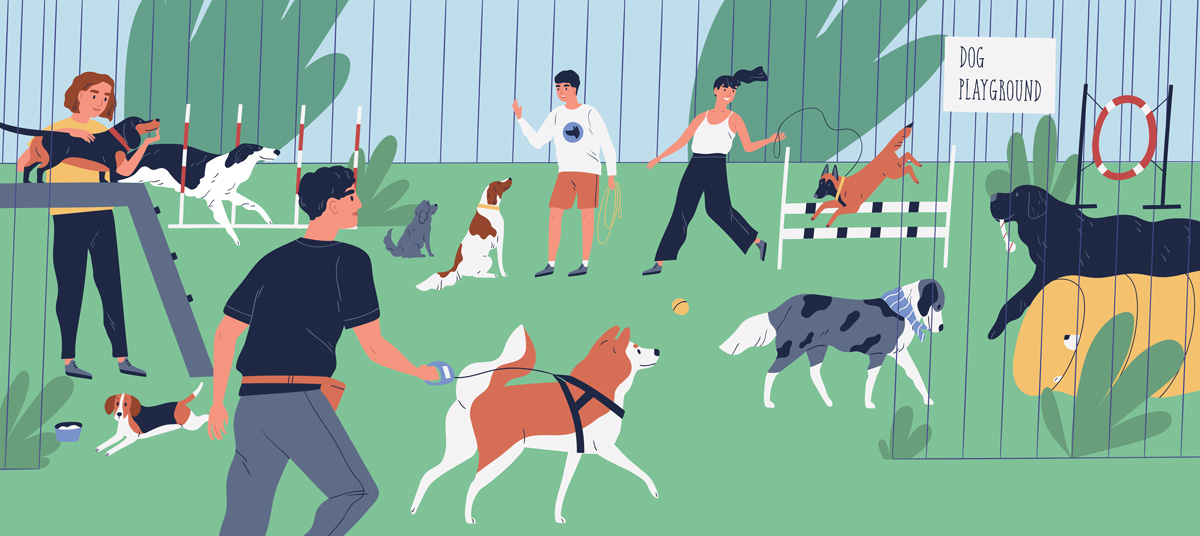Winter Gear
New Yorkers know all too well that the winter wonderland feeling of a sunny day after fresh snow is short-lived in the city. One morning it is all fluff and excitement and the giggles of children sledding down makeshift hills, the next morning it is brown slush, salted sidewalks, and whipping wind. We have a few tips for making trips to the dog run, or the park, or just around the block a bit more comfortable, but our best piece of advice is simply to brave the elements and give your pup the daily dose of outside time because it is what she needs, if it doesn’t always seem like what she wants.
Your Dog May Not Need a Coat
Most dogs are born with a coat, and a pretty sophisticated one at that. The skin and fur perform extraordinary functions – regulating body temperature, wicking moisture, and repelling ultraviolet light and toxins in the air.
The default state of being for most dogs in moderate climates should be to not wear a coat, and raincoats are almost always a bad idea. Winter coats, however, are a different story, and it serves us well to pay attention to breed, age, personality, and health conditions.
Some breeds have evolved to withstand and even thrive in extreme weather conditions and they have fur coats that should not be messed with: huskies, malamutes, and many shepherds, to name just a few.
Dogs that are small, old, sick, or have short hair are more likely to need a coat when it is very cold outside. That being said, don’t rush into it. Pay attention to the signs, and have a coat with you but not necessarily on your dog.
One thing you may also need is a thick skin to ignore the scoffs and disapproving looks from your fellow city denizens who (incorrectly) think that everyone should have a coat!
Less is More
When preparing to take our dogs out in the winter, whether it is for a sidewalk stroll or a hike in the woods, we have found that less is more. We recommend having just a few things on hand that will make winter outings easier for everyone:
- Paw wax. Some dogs get used to wearing booties, but we’ve never met one who enjoys them. Dog feet are not made to be in shoes. Instead, we suggest trying paw wax. It provides a more natural barrier between your pup’s paw pads and uncomfortable things like salt and ice.
- Waterproof leash and collar. Leather and nylon will not only absorb slush and mud becoming stinky and soggy, but the moisture will also deteriorate the materials. Having a polymer coated leash for wet days will make your life much easier. Materials like BioThane can easily be rinsed or wiped off at home.
Read the Signs
In an urban environment, dogs will usually try to take shelter from precipitation (interestingly, this doesn’t happen much on hikes). Wolves do the same thing, it’s natural. However, this doesn’t mean that you should follow your dog’s lead and stay inside. Getting out for some exercise, activity, and socialization is as important on yucky days as it is on nice days. Instead, you should be looking for real signs of being too cold like shivering or trembling, limb stiffness, whining, and lethargy.
Having a dog requires that we spend at least a little bit of time outside every day, and what a wonderful gift that is! Especially this winter, when throwing a ball in the dog run, waving to a neighbor, or having a socially distanced conversation in the park are the community interactions that make life a little lighter.
About the author
Jennifer is a writer and graduate of NYU School of Law. Jennifer researches and writes original, science-based articles for the NYC Doggies blog, and her writing on other topics can be found in the Huffington Post. Jennifer and Ovidiu have co-authored the upcoming book, WHOLE DOG PARENTING: EVERYTHING YOU NEED TO RAISE AND TRAIN AN URBAN PUP










